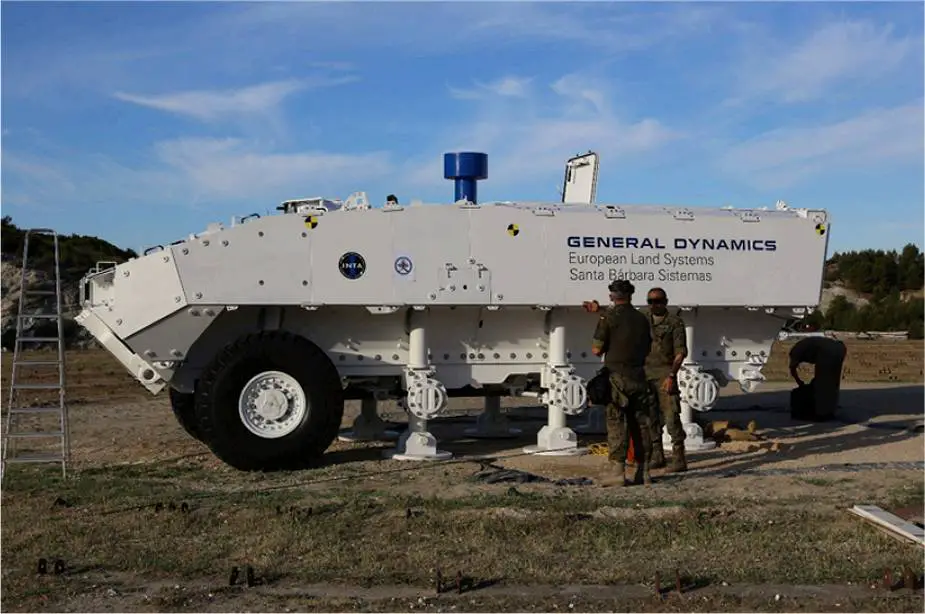General Dynamics European Land Systems - Santa Bárbara Sistemas (GDELS-SBS) has initiated the protection certification campaign for the 8x8 Dragón family of wheeled armored combat vehicles. This campaign focuses on the design of protection against mines and Improvised Explosive Devices (IEDs). The successful completion of these tests represents a significant milestone in enhancing the survivability of the Dragón.
Follow Army Recognition on Google News at this link

GDELS-SBS has initiated the protection certification campaign for the 8x8 Dragón family of wheeled armored combat vehicles. (Picture source GDELS-SBS)
The protection certification campaign, which began on April 19, 2023, at La Marañosa facilities of the National Institute for Aerospace Technology “Esteban Terradas” in Madrid, is the first of its kind in Spain for a vehicle in this category and protection level. The tests were carried out as per the NATO standards and involved the construction of a rig resembling the combat engineer version (VCZ) of the Dragón. The vehicle's welded hull, completely manufactured in Spain, was utilized for the test.
The comprehensive certification campaign includes five tests, with two IED explosions and tests on a second rig featuring the infantry fighting vehicle configuration (VCI) with a 30mm turret. These certification processes are stipulated in the contract between the Spanish Ministry of Defense and TESS Defence, a consortium including GDELS-SBS, INDRA, SAPA, and Escribano Mechanical and Engineering. The goal is to equip the Spanish Army with a new, highly protected, and versatile wheeled combat vehicle.
The tests served as a practical affirmation of extensive in-house designs and numerical simulations conducted by GDELS-SBS engineers. Predictive models of the Dragón platform were used to validate the resistant structure's suitability for the required protection levels. These models provided design guidelines for the assembly of all equipment and interior elements, ensuring resilience under extreme circumstances. Especially crucial was the design of the seats, which needed to withstand and absorb an impact while protecting the vehicle's occupants.
During the test, an explosive was detonated at a specific depth in a pit filled with controlled grain size aggregates. Sensors embedded at various depths within the soil continuously monitored geotechnical parameters. Two dummies were placed intentionally at the most dangerous locations within the rig to analyze possible post-blast injuries. High-speed cameras recorded any potential interior projections of fragments.
Post-test inspections of the rig and the analysis of the installed instrumentation affirmed the Dragón platform's success in mitigating the impact of the mine explosion. This enhanced protection ensures the survival of the crew and minimizes the risk of injuries, thereby fulfilling one of the most demanding requirements of the Dragón program.















